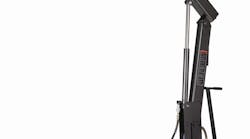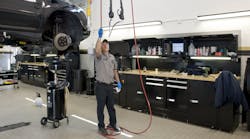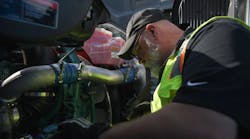It’s hardly a new idea that capturing data and analyzing it for trends and anomalies can lead to more effectively managing maintenance and repair operations. After all, software designed for that purpose has been in use by a wide range of fleet types and sizes for more than a quarter century.
“However,” says Michael Riemer, vice president, products and channel marketing at Decisiv (decisiv.com), a provider of Service Relationship Management (SRM) solutions for commercial assets, “fleets are typically looking at trends and analyzing service and repair events after the fact. How much more powerful would your data be if you could use it to manage service events and track costs as they happen?”
To be effective, real-time repair event management requires reliable data, he notes, but real-time monitoring doesn’t mean having to look at every bit of fleet management data that’s available.
PARAMETERS
“More productively, you can choose to look at what’s falling outside of your normal or target parameters,” explains Decisiv’s Riemer. “For example, you can track repairs based on specific dollar amounts, downtime and elapsed time for a specific task, the type of repair and other pre-determined values.”
Or, if an “initial diagnosis is taking longer than expected (e.g., 2 hours), you can flag only those specific repairs. Similarly, you can highlight repairs that exceed or are about to exceed the estimated completion time.
“This enables fleets to more quickly identify potential trouble spots and give those events the immediate attention they need,” he continues. “Access to this type of information, improves decision making while decreasing downtime, risk and costs.”
COMMON LANGUAGE
As shops start to look at broader trends and benchmarks across shops, technicians and makes and models, the Vehicle Maintenance Reporting Standard (VMRS) – the universal language of maintenance reporting developed by the Technology & Maintenance Council – “becomes critical,” states Riemer.
He notes that VMRS is integrated into the Decisiv SRM platform and allows “everyone in the service supply chain to have a complete understanding of what occurred during a repair. It provides for the consistent organization of complex maintenance data in a structured and well understood format.
“Beyond identifying vehicles, systems and components, the VMRS codes tell you the kinds of problems you’re seeing most often, the cause of those problems and what was done to fix them,” he continues. “Plus, you can then compare and benchmark technicians, service providers and more based on a common set of variables.”
VARIABLE SKILLS
One source of inefficiency in the shop is “unknown variability in technician skills and ineffective, instinct-based resource allocation,” says Dr. David Tobey, CEO of VivoWorks, who conducted a “wrench time” study for Decisiv. The study showed that actual repair time in truck service – 13 percent on average – was well below that in comparable industries, such as construction equipment operations.
VivoWorks (vivoworks.com) provides virtual learning and workforce development solutions.
“Most shop foremen will tell you that technician assignment today is an art, not a science,” Tobey observes. “However, our study results suggest that by applying analytics to VRMS-coded operations, we can rank available technicians by skill level, enabling fleets to reduce inefficiency by more than 30 percent.”
GREATER VISIBILITY
The data from VMRS codes, Decisiv’s Riemer points out, also allows fleets to compare the performance of shops by having a consistent way to categorize repairs.
“A major benefit is that VMRS allows you to better manage shop loading. “It gives you visibility into not only what’s already in the bays, but also pending and scheduled repairs. With this information, you know what’s wrong with trucks awaiting repair and can match technician skill sets to the types of repairs needed.
“If you’re not VMRS-coding service events, it’s very challenging to get the information you need to make effective decisions,” he adds. “By combining VMRS codes with asset usage and financial data, you have the basis for improving decision making and lowering your total cost of ownership.”




